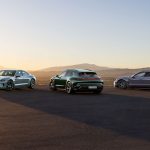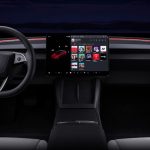No one said it was going to be easy, but the demise of the auto industry’s turn toward electric vehicles is being exaggerated, analysts said during Society of Automotive Analysts annual Automotive Outlook Conference.
Joe Langley of S&P Global Mobility said the perception of electric vehicles in the media seems to have turned on a dime from positive to negative in the past six months, even though sales of EVs continue to grow.
Industry spending dominated by EVs
Moreover, the industry’s transition to battery-electric vehicles is driving decisions within the automotive business despite the apparent slowdown in EV sales, Langley noted.
Historically the auto industry is very dynamic, Langley added.
Forty percent of the brands or nameplates that accounted for the industry’s sales in mid-1980s are now defunct or deeply troubled. Meanwhile, new brands, with BEVs as the catalysts, are pressuring the old guard, as they reimagine all aspects of new vehicles, including luxury, design, materials, packaging and size, Langley said.
While the dealer footprint makes closing brands difficult and prohibitively expensive, many of the new brands are avoiding the dealership business model and face market limitations, Langley said.
David Andrea of Plante Moran revealed his firm’s revised basic forecast for the growth of EV adoption in the U.S. still expects EVs to account for 35% of light-duty vehicles sold in the U.S. in 2030.
Sales of EVs will continue to grow despite industry challenges such as the UAW labor strike and high interest rates, adding the U.S. government and manufacturers remain steadfast in their targets and are continuing to invest in EVs.
Current EV models are typically higher trim levels focused on specialized vehicles to recover part of the high cost of their investments, making EVs pricier than their ICE counterparts and creating a headwind for EV adoption, Andrea said.
Cost, charging remain key hurdles
The average Tesla transaction prices is 11% higher than an ICE vehicle purchase today, and General Motors EV prices are 150% higher, while interest rates are driving higher monthly payments, he said.
Nonetheless, Andrea noted the UAW contracts with GM, Ford and Stellantis include significant domestic investment in EVs by OEMs during the contract period. The increased labor rates due to the UAW negations will also drive the need for cost efficiencies through the manufacturing process — implementation of automation and manufacturing simplification are greater enabled by EV vehicle architecture.
Andrea said emissions regulations continue to increase. Even though the regulations are a source of political controversy and could be rolled back if Donald Trump is elected President, Andrea said.
Rolling back the Inflation Reduction Act would be very difficult politically, Andrea said. The incentives for building electric vehicles and the green supply chain do not end until 2032, and OEMs are expected to take advantage of existing funding.
Government and OEMs driving the onshoring of the battery value chain to reduce foreign reliance and cost, as well as the demand for new facilities for upstream operations needed to support the shift is expected to remain strong, Andrea said.
Mike VanNieuwkuyk of IPSOS, a consumer research firm, said IPSOS’ recent survey has indicated more than half of American consumers would consider purchasing a battery-electric vehicle or a plug-in hybrid.
There is substantial interest in electric vehicles among potential car buyers under the age of 40. It declines sharply among Gen X and Baby Boom buyers. The problem is the people who want EVs cannot afford them, and the people who can afford them do not want them, he suggests.
“There is interest among younger buyers. Among Gen X and Baby Boomers, not so much,” he adds.
However, there is a growing body of evidence that the public charging experience leaves a lot to be desired, VanNieuwkuyk said.
While the majority of the blame for a poor charging experience falls at the feet of the charging networks, there is real danger for carmakers as well. “A recent Ipsos analysis reveals that recommendation levels for the vehicle brand plummet by over 50% when an EV owner has a bad experience at a public charging station. In other words, the charging experience is currently a pain point and detracts from the vehicle experience for many consumers,” he noted.






0 Comments
Trackbacks/Pingbacks